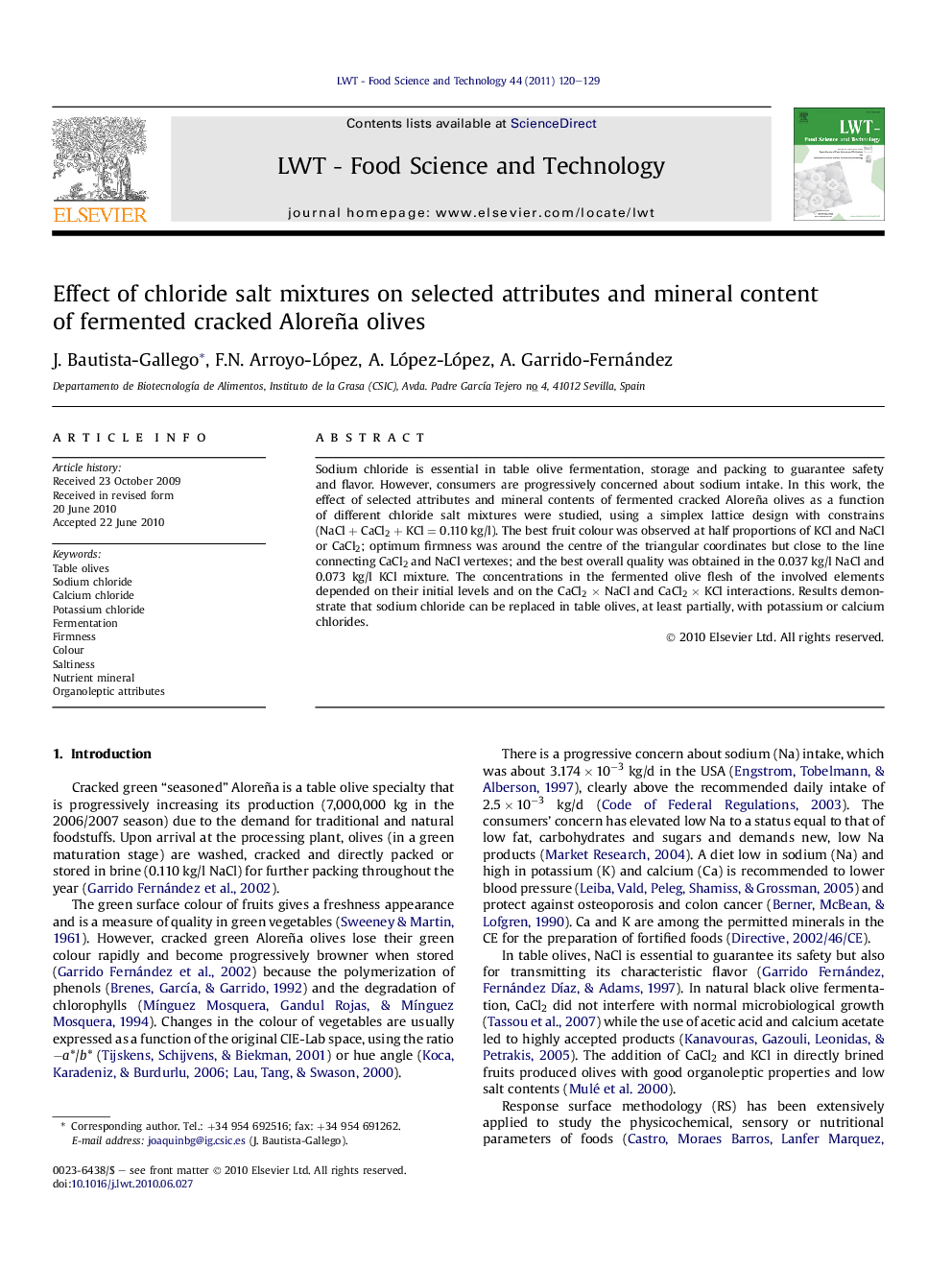| Article ID | Journal | Published Year | Pages | File Type |
|---|---|---|---|---|
| 4564222 | LWT - Food Science and Technology | 2011 | 10 Pages |
Sodium chloride is essential in table olive fermentation, storage and packing to guarantee safety and flavor. However, consumers are progressively concerned about sodium intake. In this work, the effect of selected attributes and mineral contents of fermented cracked Aloreña olives as a function of different chloride salt mixtures were studied, using a simplex lattice design with constrains (NaCl + CaCl2 + KCl = 0.110 kg/l). The best fruit colour was observed at half proportions of KCl and NaCl or CaCl2; optimum firmness was around the centre of the triangular coordinates but close to the line connecting CaCl2 and NaCl vertexes; and the best overall quality was obtained in the 0.037 kg/l NaCl and 0.073 kg/l KCl mixture. The concentrations in the fermented olive flesh of the involved elements depended on their initial levels and on the CaCl2 × NaCl and CaCl2 × KCl interactions. Results demonstrate that sodium chloride can be replaced in table olives, at least partially, with potassium or calcium chlorides.
